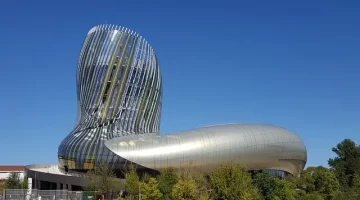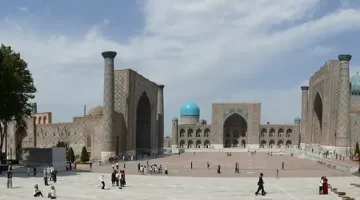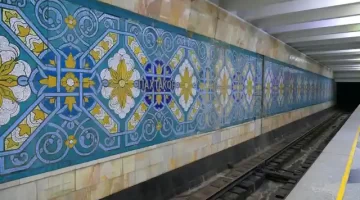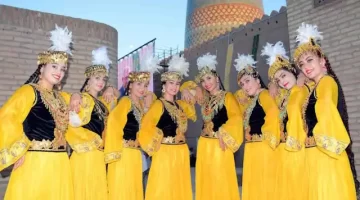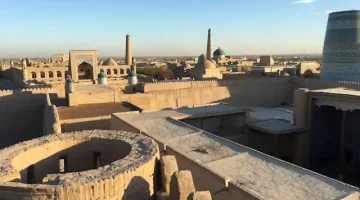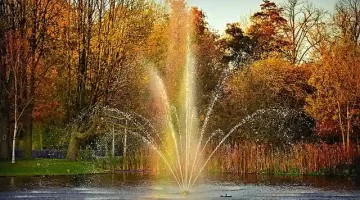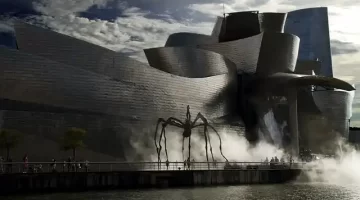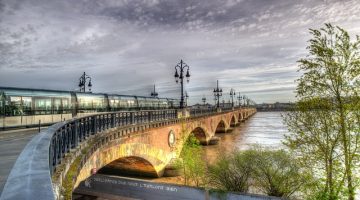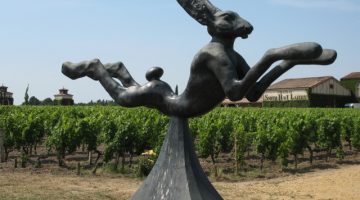The Best Things to Do in Toulouse
The best things to do in Toulouse include Europe’s biggest space museum, the Place du Capitole, Basilica Saint-Sernin and museums like the Musee des Augustins.
The Basilica Saint SerninKnown as the Ville Rose – the pink city – Toulouse casts a warm glow over its visitors. It may be best known for its aeronautics industry and industrial suburbs, but the historic old town along the banks of the Garonne paints a much prettier picture.
The Best Things to Do in Toulouse include:
IN THE CITY CENTRE
Place du Capitole
This huge square is the heart of Toulouse, for history, festivals and café culture.
Basilica Saint-Sernin
The greatest pilgrimage church in the South of France.
Les Jacobins
A massive monument to the region’s medieval history.
Mansions of the Woad Merchants
The city’s Renaissance wealth is preserved in these sumptuous townhouses.
Musée des Augustins
An outstanding collection of Romanesque art, housed in a medieval monastery.
Les Abattoirs
A former slaughterhouse has been transformed into a superb exhibition space for modern art.
Cathédrale Saint-Étienne
The venerable hub of Toulouse’s medieval quarter. See our full page about the Cathedrale St-Etienne in Toulouse.
FURTHER AFIELD
The Cité de l’Espace
The biggest and best European space museum.

With no local stone at their disposal, Toulouse’s forefathers became artisan bricklayers, building magnificent churches, townhouses and civic buildings in handsome red brick that turns from fiery orange to soft pink in the setting sun, hence its nickname. After dark, the Plan Lumière (a popular scheme in many French cities for illuminating buildings after dark) lights up the main monuments and the riverbank.
Toulouse is a university city, second only to Paris in the numbers of students, who lend it a lively, youthful buzz. Soak up the scene in the many outdoor cafés, or the culture in the impressive art museums. The city dates back to Roman times, and has a decidedly Mediterranean air.
Here the Canal du Midi begins its run to the sea. Both the riverbank and the canal are prime places for strolling and cycling. The riverside is often the focus for Toulouse’s multitude of festivals. In this fun-loving city, any excuse will do for a celebration.

Place du Capitole
This enormous square covering one hectare in the heart of Toulouse is named for the Capitole, or City Hall, which stretches over 128 metres along its eastern side. It’s a place for concerts and festivals, for markets (on Wednesday and Saturday mornings), or simply for people-watching, best done from the string of pleasant cafes which spill out from the arcades lining the western side. The old city wall ran along the square in Roman times, but the arcades date from the mid-19th century. Look up at the ceiling to see a series of modern paintings depicting the history of the city.

The arcades are a great vantage point for admiring the 18th-century Capitole itself, with its elegant façade of pink brick and stone. The eight marble columns are a clue to its name; they represent the eight Capitouls, or consuls, who governed the city in medieval times. The building’s right wing houses the Théâtre du Capitole, where opera and ballet performances are staged. The impressive stone portal leads into the foyer; upstairs, the Salle des Illustres and other rooms house beautiful murals of the history of the city. Through the portal’s east side, the 16th-century donjon (keep), part of the original Capitole, houses the tourist office.

Basilica Saint-Sernin
The basilica, in place Saint-Sernin, is the largest Romanesque church in the Western world, and also one of the oldest, but it is impressive for its sheer beauty alone. Rising above a series of rounded apses and tiered roofs is a striking, five-tiered, octagonal bell tower, a style typical of Toulouse. The exquisite carvings above the southern entrance are early 12th century. Inside, it is larger and lighter than most churches of its type, with many windows, a huge nave with double side aisles, and an ambulatory. This was one of Europe’s greatest pilgrimage churches. The chapel walls and crypt contain reliquaries holding 175 relics of numerous saints, many donated by Charlemagne.
The simple marble altar was consecrated by Pope Urban II in 1096, but the site is much older. The remains of a Roman cemetery and a 5th-century church, supposedly dedicated to St-Sernin, were found here. St-Sernin was the first bishop of Toulouse, when it was still a Roman city, and he was martyred in AD 250. During a sacrificial ritual, the Romans were unable to kill a bull and blamed it on the Christian influence. They tied St-Sernin to the bull and it dragged him through the streets to his death. Rue du Taur, which leads to the basilica from place du Capitole, was named for this event. The surrounding area is Toulouse’s student quarter.

Les Jacobins
Toulouse’s architectural skill with brick is best seen in this remarkable church and monastery complex in Parvis des Jacobins. It was constructed between 1230 and the early 14th century by the Dominican Order, which was founded in Toulouse. Les Jacobins served as the city’s first university.
The outside of the church is utterly plain, but the sheer size and mass of it is impressive. That was the intention. At that time the Catholic Church was under fire for its materialism, and other sects like the Cathars were calling for a more pure, simple religion. The Church wanted to show its dominance, and so built this imposing structure, but without adornment outside.

Inside it’s a different story. The huge single nave – built for preaching to the crowds – is unique in the French Gothic style. It is divided by colossal columns which fan out to look like palm trees on the ceiling’s ribbed vaulting. Between the stained-glass windows, the bricks are painted to look like stone (stone indicated wealth, while brick was seen as ‘poor’).
Only the rose window is original. The medieval windows were destroyed when Napoleon installed barracks and stables here. The church houses the tomb of Saint Thomas Aquinas. You can also visit the cloisters, a place of repose and a good spot for viewing the superb bell tower. The old refectory is used for temporary art exhibitions.

The Mansions of the Woad Merchants
During the 15th and 16th centuries, much of Toulouse’s wealth came from its trade in woad (or pastel in French), a plant which yielded a coveted blue dye. The woad merchants used their riches to build sumptuous town houses. Most remain in private ownership, and can be seen on a guided tour from the tourist office. Two more have easy access.

Although Hôtel de Bernuy, built 1530-1550, is now a school, its inner courtyard is open to the public. You can see its sculpted Gothic doorway, window decoration and splendid internal staircase. The finest Renaissance mansion is Hôtel d’Assézat, built in 1555 for Pierre d’Assézat, a Capitoul. From the courtyard you can admire its ornate stone facade with classical columns, sculpted doorways and a covered gallery. It now houses the Fondation Bemberg, with artworks from the Renaissance to the French modern school.

Musée des Augustins
Founded during the Revolution, this is one of the oldest museums in France. It is set in a 14th-century Augustinian monastery at 21 rue de Metz, and holds an unparalleled collection of Romanesque art. If you’ve ever wanted to get up close to a gargoyle, this is the place as a remarkable gargoyle gallery lines the cloisters surrounding the restored botanical garden.
The adjoining rooms are filled with impressive medieval church sculpture. The Salle Capitulaire contains one of the museum’s masterpieces, a Madonna and Child from the 15th century, notable for its exquisite carving and expressive pose. Religious paintings are displayed in the large church nave, including works by Perugino and Peter Paul Rubens. Watch out for the organ recitals which take place here.

The highlight of the museum is the collection of Romanesque capitals, which came from three major churches in Toulouse. It is visually stunning, with the white capitals displayed on top of red columns, in row after row, disappearing to the far end of the huge room. Altogether they have 250 capitals, though not all are on show. The sculptural work is outstanding, and each one is different and tells a story. The most famous capital depicts the beheading of St John the Baptist, from the cathedral cloister of St-Etienne.
Upstairs, the salon rouge is covered in 19th-century French paintings, including four works by Henri de Toulouse-Lautrec.

Les Abattoirs
The city’s pride and joy is this superb modern art museum, set in a converted slaughterhouse at 76 allées Charles-de-Fitte. The handsome red-brick building on the river’s left bank dates from 1831, and was a working abattoir until its closure in 1989. In its new incarnation it makes a fantastic space for the museum’s collection of over 2,000 artworks, which are displayed in rotation or as part of temporary exhibitions.

All the major art movements from the mid-20th century to the present are represented, from France and the Mediterranean to America and the Far East. The enormous space allows for large artworks and installations. The highlight of the museum is Picasso’s huge theatre backdrop, entitled The Stripping of the Minotaur in the Harlequin Suit, which is on show six months of the year. The exterior and courtyard feature sculptures and mosaics by Fernand Léger, a mediathèque and a café.

Cathédrale Saint-Étienne
As the bishop’s seat, the cathedral is the most prestigious church in Toulouse, though it gets less attention than its rivals, possibly because its inharmonious architecture makes it harder to understand and appreciate. Located on place Saint-Étienne, it was built or remodelled in stages from the 11th to the 17th centuries, leaving a mixture of Romanesque and Gothic styles.

The interior is oddly out of alignment due to a lack of funds to complete the new church in the latter part of the 13th century, and its subsequent connection to the old church several hundred years later. Still, there are treasures to be seen, including the beautifully carved walnut choir stalls, the bishop’s throne, the marble altar, and the 16th- and 17th-century tapestries. Their blue colour has survived well and comes from the woad dye which brought Toulouse so much wealth in that era.
In the square in front of the cathedral is the city’s oldest fountain. From here, wander through the medieval part of town, with its quiet neighbourhoods and squares such as place Saintes-Scarbes, formerly the district of the nobility and now full of antique shops and galleries. Peek into the open courtyards to see grand mansions such as Hôtel d’Ulmo (1530) on rue Ninau. On the corner of rue Croix Baragnon and rue des Arts is the oldest house in Toulouse, dating from the 14th century.

As you’re strolling the streets of Toulouse, notice its bilingual street signs. The top sign is in French, the bottom sign in Occitan, the traditional language of the south. It comes from the word ‘Oc’, which means ‘yes’, and is a littrle like Spanish. You will also see some of the old city street signs, which were colour-coded to help people orient themselves in the days when illiteracy was high. Yellow signs were for streets parallel to the Garonne, white signs were for those perpendicular to the river.

The Cité de l’Espace
This is the biggest and best space museum in Europe. It’s about 3 miles/5 kms southeast of the city centre, an easy drive and you can also get there on the 37 bus to La Plaine: the Cité de l’Espace has its own stop. You can easily spend a day there, with lots of hands-on activities, and highlights include a chunk of moon rock, sections of the space station, and a full-size replica of Russia’s 1957 sputnik.

